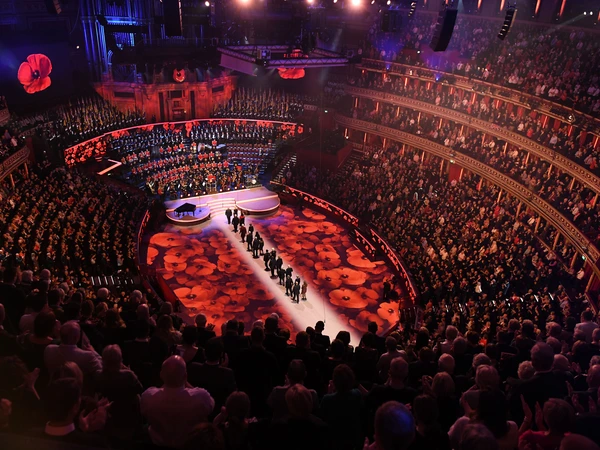
We Remember
We remember those who lost their lives on active service in all conflicts; from the beginning of the First World War right up to the present day. We also remember all those who have served and their families.
What is Remembrance?
Brampton & District Remembrance Parade
On Sunday 14 November 2022 the Brampton & District Branch in partnership with Brampton Parish Council, held its first official Remembrance Parade for many years.
Although the village Scout and Guide organisations have been keeping the tradition alive by annually marching from the scout hut to the church and back, the Parish Council decided that it was the right time to incorporate Brampton Park (formerly known as RAF Brampton/Brampton Camp) into the Parade.
The Parade began at the Lady Olivia Centre on Brampton Park and then proceeded to St Mary Magdalene Church for the service, after which the Parade then proceeded along the High Street to The Green, where the salute was taken by the Deputy Lieutenant of the County on behalf of His Majesty the King.
The Parade was led by a contingent of serving Armed Forces personnel from 42 Engineer Regiment (Geographic) followed by Veterans and members of the Royal British Legion with groups from the local Scout and Guide organisations. A large number of local residents lined the roads to be part of, what we hope, will be a regular event in the village’s calendar.
Many thanks to all those that participated and those who supported the parade along the route.
Please contact Mick Forsdick at Bramptonrbl.Chairman or on 07938026504 for further information.
Observe Remembrance Day
People stop work to observe a moment of silence at 11am on November 11, which is the time and date when hostilities formally ended after more than four years of battle during World War I. Poppies are worn as a symbol of respect and tribute on Remembrance Sunday and/or November 11.
The day is also marked by events such as memorial services, church services and parades. A national commemoration takes place at Whitehall, a road in the City of Westminster in central London.
Public Life
Remembrance Day is an observance and not a public holiday in the UK. Many businesses may temporarily pause activity at 11am for 2 minutes of silence on November 11.
About Remembrance Day
Also referred to as Poppy Day or Armistice Day, Remembrance Day is observed in Commonwealth countries, including Australia and Canada. Other countries such as the U.S. have similar observances like Veterans Day. November 11 is the anniversary of the signing of the armistice, which ended World War I hostilities between Allied nations and Germany in 1918.
100 Years of Remembrance
The History
Remembrance is the act of honouring those who served to defend our democratic freedoms and way of life. We unite across faiths, cultures and backgrounds to remember the service and sacrifice of the Armed Forces community from Britain and the Commonwealth.
During the First World War, much of the fighting took place in Western Europe. The countryside was blasted, bombed and fought over repeatedly. Previously beautiful landscapes turned to mud; bleak and barren scenes where little or nothing could grow. There was a notable and striking exception to the bleakness - the bright red Flanders poppies. These resilient flowers flourished in the middle of so much chaos and destruction, growing in the thousands upon thousands.
Shortly after losing a friend in Ypres in 1915, a Canadian doctor, Lieutenant Colonel John McCrae was moved by the sight of these poppies and that inspiration led him to write the now famous poem 'In Flanders Fields'.
 |
In Flanders fields, the poppies blow
Between the crosses, row on row
That mark our place, and in the sky
The larks, still bravely singing, fly
|
 |
The Poppy
This poem then inspired an American academic named Moina Michael to adopt the poppy in memory of those who had fallen in the war. She campaigned to get it adopted as an official symbol of Remembrance across the United States and worked with others who were trying to do the same in Canada, Australia, and the UK.
Also involved with those efforts was a French woman, Anna Guérin who was in the UK in 1921 where she planned to sell the poppies in London.
There she met Earl Haig, our founder, who was persuaded to adopt the poppy as our emblem in the UK. The Royal British Legion, which had been formed in 1921, ordered nine million poppies and sold them on 11 November that year.
Now, around 40 million poppies are sold each year by Royal British Legion Volunteers with all proceeds being used to provide Armed Forces Veterans, Serving Personnel and their families with financial support, advice, employment, mobility, housing and mental health facilities.
The Act
This year, as in years gone by, on the 11th and 13th November, a two-minute silence will be held across the nation at 11.00am to honour those who have fallen. On Remembrance Sunday at war memorials across the nation and the commonwealth tributes will be paid to those who have made the ultimate sacrifice. Today we are more aware than ever that battles are fought mainly by young people, and many of those who survive bear scars for life.
The act of ‘remembering’ will not only look back to mark their sacrifice, but also to learn lessons for the future.
Reflecting on the poem, ‘In Flanders Fields’, Moina Michael, wrote:
And now the torch and poppy red
We wear in honour of our dead.
Fear not that ye have died for naught;
We'll teach the lesson that ye wrought
In Flanders Fields.